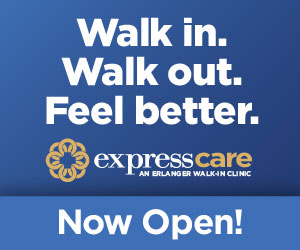Maybe you’ve heard of GERD. But do you really know what it is and how it affects the body?
Many people think that GERD is just another name for heartburn. But that’s not the case. While heartburn is one symptom of GERD, it isn’t the only one.
Let’s back up a bit. GERD is an abbreviation and common name for gastroesophageal reflux disease, a condition that occurs when the muscle at the end of the esophagus doesn’t close properly. Because of that, the contents of a person’s stomach (acid reflux) can leak backward into the esophagus, irritating it.
Think you might be experiencing the effects of GERD? Read on for a look at some basics about the condition, including how it’s treated.
What is GERD: Symptoms
We mentioned above that heartburn is one symptom of gastroesophageal reflux disease. However, the backup of acid reflux can also cause other symptoms.
A person with GERD may experience:
- Chest pain or discomfort
- Regurgitation of food or stomach acids
- Difficulty swallowing
- Feeling as if there’s a lump in your throat
- Chronic cough or a hoarse throat
- Episodes of aspiration pneumonia
- Disrupted sleep
Because these symptoms are also common for other conditions — including a heart attack in the case of chest pain — it’s important to seek medical attention to diagnose the underlying cause.
If you experience chest pain, seek medical care immediately. For other symptoms, if they linger for a couple weeks or longer, talk with your doctor.
A look at GERD: Risk factors
GERD occurs when the lower esophageal sphincter (LES) weakens or relaxes, causing acid reflux to back up into the esophagus. There are many reasons why this occurs, but one of the more common ones is a hiatal hernia.
A hiatal hernia occurs when the upper portion of the stomach moves into the chest through the diaphragm. People with a hiatal hernia are at a greater risk of stomach contents refluxing into the esophagus, especially after eating and when they lie flat at night.
There are many other factors that can increase the risk of GERD, including lifestyle and dietary choices. Foods such as chocolate, mint, coffee, carbonated drinks, and alcohol, as well as those high in fat content or fried, can increase the risk of developing reflux.
Smoking is also a risk factor — smoking cigarettes has been shown to relax the LES, leading to reflux. Obesity and pregnancy are also risk factors.
A look at GERD: Diagnosis & treatment
GERD may seem like a minor condition or inconvenience, but if left untreated, it can have serious effects over time.
Untreated GERD can lead to esophagitis, an inflammation of the esophagus; esophageal stricture, where the esophagus narrows; respiratory problems; and Barrett’s esophagus, a serious condition that can develop into cancer.
If you’re experiencing symptoms of gastroesophageal reflux, your doctor will perform multiple tests to help make a diagnosis. This may include endoscopy and biopsy to allow the doctor a look inside the esophagus.
Treatment of the condition will vary greatly depending on the severity of your symptoms. For those with minor symptoms, lifestyle changes may make a world of difference.
Avoiding trigger foods like those identified above, not overeating, and not eating within a few hours of bedtime are all dietary adjustments that may help. Losing weight, quitting smoking, and using over-the-counter acid reflux medications for the short term may also help provide relief.
GERD: When lifestyle changes aren’t enough…
In more serious cases, lifestyle changes may not be enough. Doctors may recommend prescription medications to help alleviate symptoms or reduce the amount of acid in your stomach.
Surgery is also an option for more serious cases of GERD or when the condition lingers. A procedure called fundoplication has long been the standard for surgical treatment.
During this procedure, a surgeon sews shut the top of the stomach around the esophagus. This adds pressure to the lower end of the esophagus and limits reflux.
But there’s a new gold standard for the surgical treatment of chronic GERD — transoral incisionless fundoplication, or TIF.
“We’ve long used fundoplication to treat serious cases of GERD,” says Arslan Kahloon, MD, gastroenterologist with Erlanger Health. “The TIF procedure, though, allows us to effectively treat patients in a more minimally invasive way, without incisions. This means they experience a faster recovery and fewer complications.”
During the TIF procedure, a doctor reduces hiatal hernia, if one is present; restores the angle at which the esophagus enters the stomach; and increases the pressure of the LES, which reduces reflux. All of this is done inside the stomach — without incisions.
Dr. Kahloon began performing the TIF procedure in 2018, and his experience places him in the top 5% of all TIF specialists trained to date. This procedure combines a laparoscopic hiatal hernia repair with the TIF procedure in a single session.
If you are suffering from symptoms like heartburn, regurgitation, or chronic cough and they are interfering with your sleep or quality of life, contact Dr. Kahloon’s office at Erlanger Health System at (423) 778-4830.







